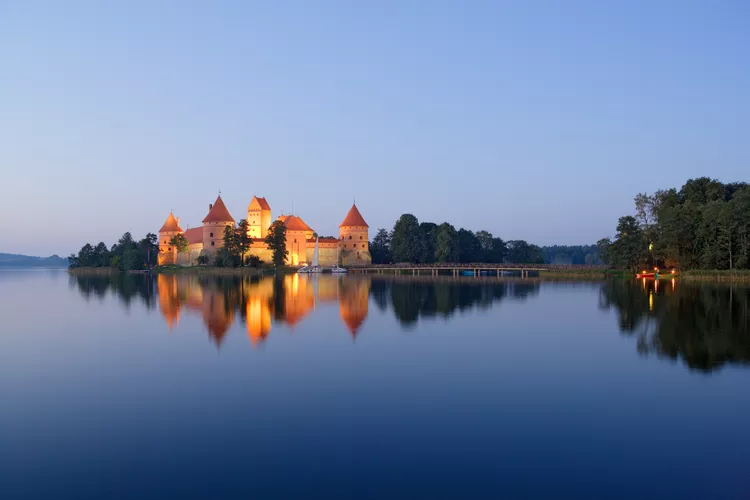1. Importance of Trakai and Its Castle
2. Two Castles Within One Museum
3. Exhibits at the Castle Museum
4. The Karaim Community
5. Visitor Information
6. Exploring the Town of Trakai
Trakai and Trakai Castle hold significant value in Lithuanian history. Associated with the Grand Duke Gediminas, a medieval hero of Lithuania, Trakai gained prominence before the Grand Duchy of Lithuania unified with Poland, leading to the formation of the Poland-Lithuania Commonwealth. Beginning in the 1400s, the area around the castle became a focal point, although human habitation existed long before. The name “Trakai” translates to “glade,” reflecting the area’s lush landscape.
Trakai is renowned not only for its castle but also for its breathtaking natural scenery, where lakes harmoniously converge. This destination attracts both locals and international travelers year-round. While summer sees the majority of visitors, many suggest a winter visit to experience the enchanting frozen lakes and the castle blanketed in snow.
Two Castles Within One Museum
Trakai Castle is located approximately 20 km from Vilnius, Lithuania’s capital, making it a perfect day trip location. The Trakai Castle Museum encompasses two castles: one is perched on an island amidst a lake, while the other sits along the shore. Though a third castle is associated with Trakai, it is currently in ruins and not part of the museum complex; however, visitors can still view its remnants as they stroll around the lake’s edge.
Exhibits at the Castle Museum
Following various renovations, Trakai Castle now showcases some of Lithuania’s most captivating archaeological artifacts, religious items, coins, and discoveries from excavations conducted on the castle grounds.
The Karaim Community
The Karaims, or Karaites, are an ethnic group that settled in Trakai during the 14th century. This Turkish-speaking community follows a unique religion rooted in Judaism. Originally from Crimea, they maintain traditions from their ancestors’ lifestyles, one of which visitors can savor: kibinai—dumplings filled with meat, cheese, or vegetables—are available in select Trakai restaurants. Experts assert that the kibinai in Trakai are unparalleled, significantly superior to those available in Vilnius. Additionally, a small exhibit about the Karaites can be viewed at the castle museum.
Visitor Information
Entry to the Trakai Castle Museum requires a fee, and staff will guide visitors through the intended exhibition route, restricting backtracking. Visitors wanting to use a camera inside the castle will need to pay a small fee. For further details, visit the Trakai Castle Museum’s official website, which is available in both English and Lithuanian.
Exploring the Town of Trakai
As a former medieval capital of Lithuania, Trakai retains much of its historical charm. Visitors can experience the town’s festive events that celebrate its storied past. Being located near three lakes, Trakai provides opportunities for scenic waterfront walks, picnics, and various water-based recreational activities.





